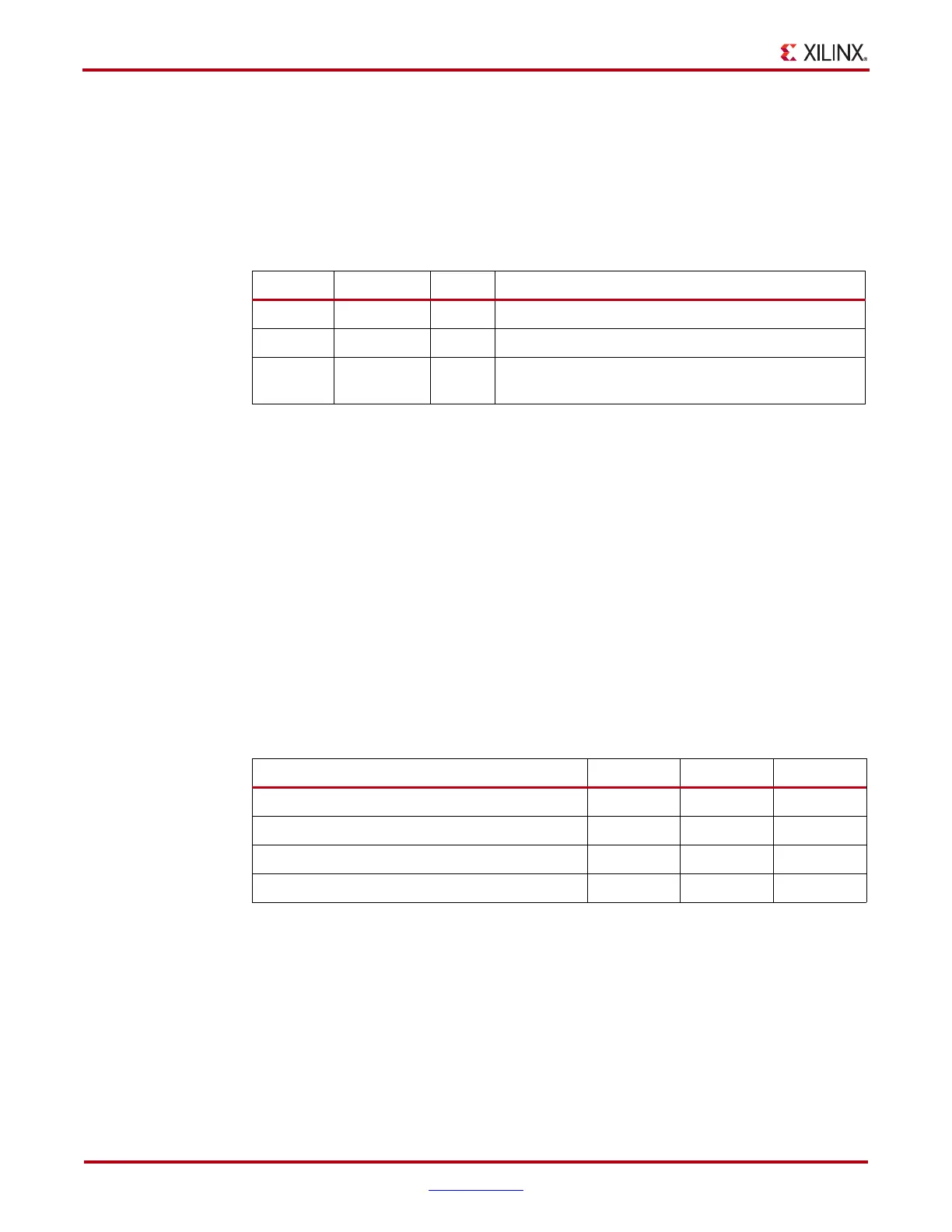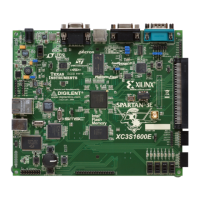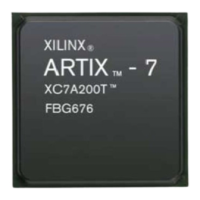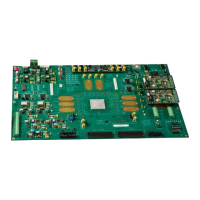328 www.xilinx.com Virtex-5 FPGA User Guide
UG190 (v5.0) June 19, 2009
Chapter 7: SelectIO Logic Resources
Module Reset - RST
The IODELAY reset signal, RST, resets the delay element to a value set by the
IDELAY_VALUE or ODELAY_VALUE attribute. If these attributes are not specified, a
value of zero is assumed. The RST signal is an active-High reset and is synchronous to the
input clock signal (C).
The control pins are summarized in Table 7-8.
Increment/Decrement Signals - CE, INC
The increment/decrement is controlled by the enable signal (CE). This interface is only
available for the IDELAY mode, when IDELAY_TYPE = VARIABLE.
As long as CE remains High, IDELAY will increment or decrement by T
IDELAYRESOLUTION
every clock (C) cycle. The state of INC determines whether IDELAY will increment or
decrement; INC = 1 increments, INC = 0 decrements, synchronously to the clock (C). If CE
is Low the delay through IDELAY will not change regardless of the state of INC.
When CE goes High, the increment/decrement operation begins on the next positive clock
cycle. When CE goes Low, the increment/decrement operation ceases on the next positive
clock cycle.
IODELAY is a wrap-around programmable delay element. When the end of the delay
element is reached (tap 63) a subsequent increment function will return to tap 0. The same
applies to the decrement function: decrementing below zero moves to tap 63. The
increment/decrement operation is summarized in Table 7-9.
Table 7-8: Control Pin Descriptions
Pin Type Value Description
INC Input 1 Increment/decrement number of tap delays
CE Input 1 Enable increment/decrement function
RST Input 1
Reset delay element to pre-programmed value. If no
value programmed, reset to 0
Table 7-9: Increment/Decrement Operations
Operation RST CE INC
Reset to IDELAY_VALUE 1 x x
Increment tap count 0 1 1
Decrement tap count 0 1 0
No change 0 0 x
Notes:
1. RST takes precedence over CE and INC.

